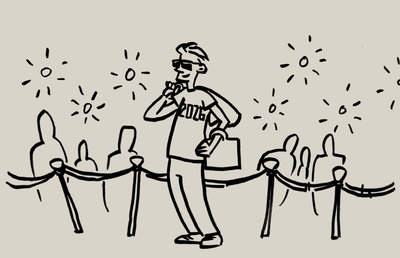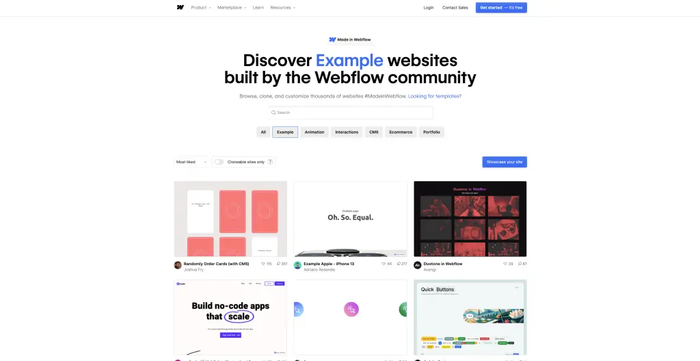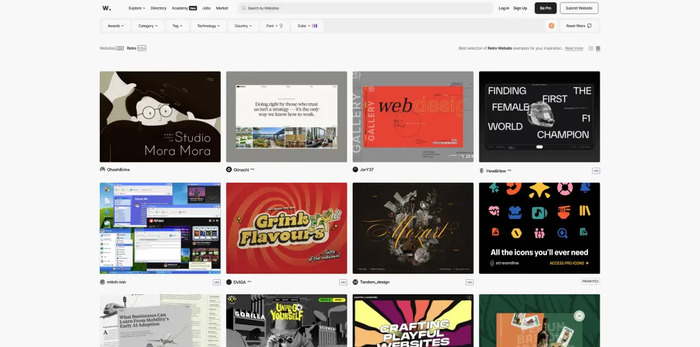Top 7 Web Design & Development Trends for 2026
From the Journal – Posted 26.11.2025

There’s been an acceleration. The past year has seen a faster pace of digital change (you’ve heard of AI, right?). In turn, expectations around design and development have also hit new heights.
As we head into 2026, AI is leading the vanguard of “more for less”. Complexity is becoming a commodity. Experimentation is now expectation. And small touches are now big business.
Even if the AI bubble does exist and does pop, 2026 will be another breathless 12 months. If you take one thing away from Adobe’s acquisition of Semrush, it’s that marketing tech stacks are becoming more integrated.
Matt Powell | Co-Founder & Creative Director“Innovation in one part of the marketing tech stack now ripples through the others faster than it used to. Brands should think about their digital ecosystem as an interconnected whole, not a collection of isolated tools.”
There are dozens of micro-trends we could talk about this year: accessibility, non-traditional scrolling, and building trust through brand. We’ve chosen 7 that we believe will have the broadest impact on web design and development in 2026.
Top 7 Web Design & Development Trends for 2026
1. AI Steps Into the Design Studio
Ok, so the idea of involving AI in design isn’t new. But as these tools get ever closer to human-quality output - have you tried Nano Banana Pro? - they are moving from experimental to practical production.
Whether or not AI is ethically or creatively the correct decision is a debate for another day. However, the potential cost savings are compelling for businesses who would prefer to place spend where it is more likely to impact performance: UX, messaging, tech.
We’ve already had conversations with clients about the possibilities of using AI to generate visual assets and motion concepts. These are tasks that would previously have required a dedicated illustrator or animator.
For agencies, offering AI co-design as an alternative helps them stay on the front foot and appeal to budget-conscious clients for whom design isn’t their main focus. AI won’t replace craft specialists, but it will unlock early-stage ideas more cheaply, more quickly.
2. Two Design Extremes, One Big Trend
This could be two trends, but in reality, they go hand in hand. Instead of the pendulum swinging in favour of one or the other - minimalism or maximalism - the trend now, and going into 2026, is for both extremes to grow louder. And, in some cases, together.
Minimalist design, defined by clean layouts and white space, allows brands to draw focus to the important elements of a page. High value copy. Product features. Key CTAs and conversion points. It appeals to brands seeking clarity, focus and calm.

On the other hand, maximalism is defined by loud colour, bold typography, detail-rich graphics and animation. The aim is to have a personality in a sea of AI-generated sameness.
But the real trend here is where the two meet. Brands are realising that design needn’t be polarised. It’s about creating clean and clear websites that work for the user, while maintaining vibrancy and personality.
3. Shifting Shape: Real-Time Personalisation
Personalisation has existed for years. But, by-and-large, when we spoke about personalisation, we meant dynamic content based on data segmentation.
2026 will be the year when we start seeing personalisation built upon real-time data.
We will start seeing more contextual experiences: adaptive navigation, recommendations, design and CTAs informed by signals like on-page behaviour, patterns, personal preferences, and history.
And it’s not personalisation for the sake of it. Personalised experiences have been consistently shown to increase engagement and the likelihood of conversion.
With AI search reshaping how people discover brands - and informational search being eroded - giving users exactly what they need the moment they land becomes even more important.
4. Conversational User Experiences go Mainstream
Like many trends, the basics of conversational website experiences have been around for a little while. But it’s in 2026 that we will see conversational UX truly step into the mainstream.
Matt Powell | Co-Founder & Creative Director"Until now, there's been a question lingering over conversational AI and chatbots: who is it really better for? That's now changing as technology catches up with expectations. Expect that to continue into the mainstream in 2026."
Typically, this won’t manifest as a replacement for traditional click-based journeys, but whether powered by chatbots, voice agents, or embedded LLMs, users will start to see more layered experiences:
- Product finders or personal shoppers
- On-site dialogue-based search
- Customer support that feels more like “talking to the brand”
Where the chatbots of old bordered on novelty. The conversational user experiences of 2026 are all about speed and ease. The technology is now there to connect users to what they’re looking for with less friction and frustration.
5. No-Code Democratises Complexity (And Everything)
A few years ago, building rich 3D content or WebGL-powered interactions required deep technical expertise. That experience was expensive and out of reach for many.
In 2026, that barrier will continue to lower. No-code and low-code tools, like unicorn.studio, let designers and front-end teams more easily create:
- Lightweight 3D models
- Animated visual sequences
- Physics-based interactions
- Immersive scroll experiences
This is a quiet trend. But it’s powerful. When previously complex tech becomes accessible, it often leads to a spike in creativity. Expect to see that creativity and capability result in more ambitious websites and experiences.
And it isn’t just complexity that no-code or low-code systems support. Platforms like Webflow are making it far easier for anyone and everyone to be their own developer.

This is one to watch for agencies as it drives expectation sky-high. No-code solutions put the ability to create a higher standard of website within the grasp of non-coders.
Suddenly, the value becomes not that you can build it, but how it’s built, whether it performs, and the creativity and knowledge you bring to the table.
6. Micro-Interaction and Motion
It’s a similar story. Micro-animations have been a part of UX for years: subtle effects, hover states, and small directional cues that encourage defined customer journeys.
This way of taking the customer on a journey without detracting or distracting from your messaging will only grow in 2026. It’s the new navigational language, using sequences of small animations and interactions to guide users through complex journeys.
It’s no longer about animation for the sake of it - because it’s cool and we have to have it - it’s about animation with a purpose. Even simple visual cues can have a big impact:
Visual Feedback Reduces Drop-Off
A tiny shake on an incorrect field, a soft green glow when something is entered correctly, or a micro-loading animation after hitting “Submit.” These motions reassure users and avoid abandonment through confusion.
Step-by-Step Guidance in Complex Journeys
For multi-step processes, micro-transitions between steps help users navigate. A gentle slide signals progress, while a subtle highlight on the next action button guides attention.
Interaction Builds Understanding
Animations help explain how something works in a way static imagery can’t. Think of a hover motion that reveals product features, or slight movements that indicate interactivity.
7. A Return to Retro
There’s always a reaction. And it’s the same with AI. A perceived lack of personality with AI is fuelling a retro design counter-culture of sorts.
This one’s a bit out of left field. It probably won’t hit the mainstream, so we’re cheating a bit, but there’s a definite movement in the direction of early-internet brutalism. It’s nostalgia, and nostalgia is always effective.

As more brands adopt clean layouts - see point two - there’s a growing appetite for interfaces that feel unapologetically human. We’re talking asymmetry, clashing colours, typeface you haven’t seen for 20 years. In some cases, just… weird stuff.
It won’t hit the biggest websites. But at a time when algorithmic polish is dominating the web, it’s nice to have a creative breath of fresh air to celebrate.
Macro-Trend: Intention
The thread running through all of this is one of action and reaction. AI is accelerating workflows, no-code tools are lowering barriers, and user expectations are expanding faster than ever.
Yet this is being recognised, and many of the trends gaining traction are about creating clarity, personality and experiences that make sense and still feel human.
Ultimately, if you take the trends above and the wider digital landscape as a whole, then intention is the macro-trend. Why something is designed in a certain way is now much more important than design for its own sake.
If you have one takeaway from this article, let it be that you shouldn’t follow every trend (good luck being minimalist, maximalist and brutalist, all at the same time). Instead, choose the path you follow with intention. Always ask why before you ask how.